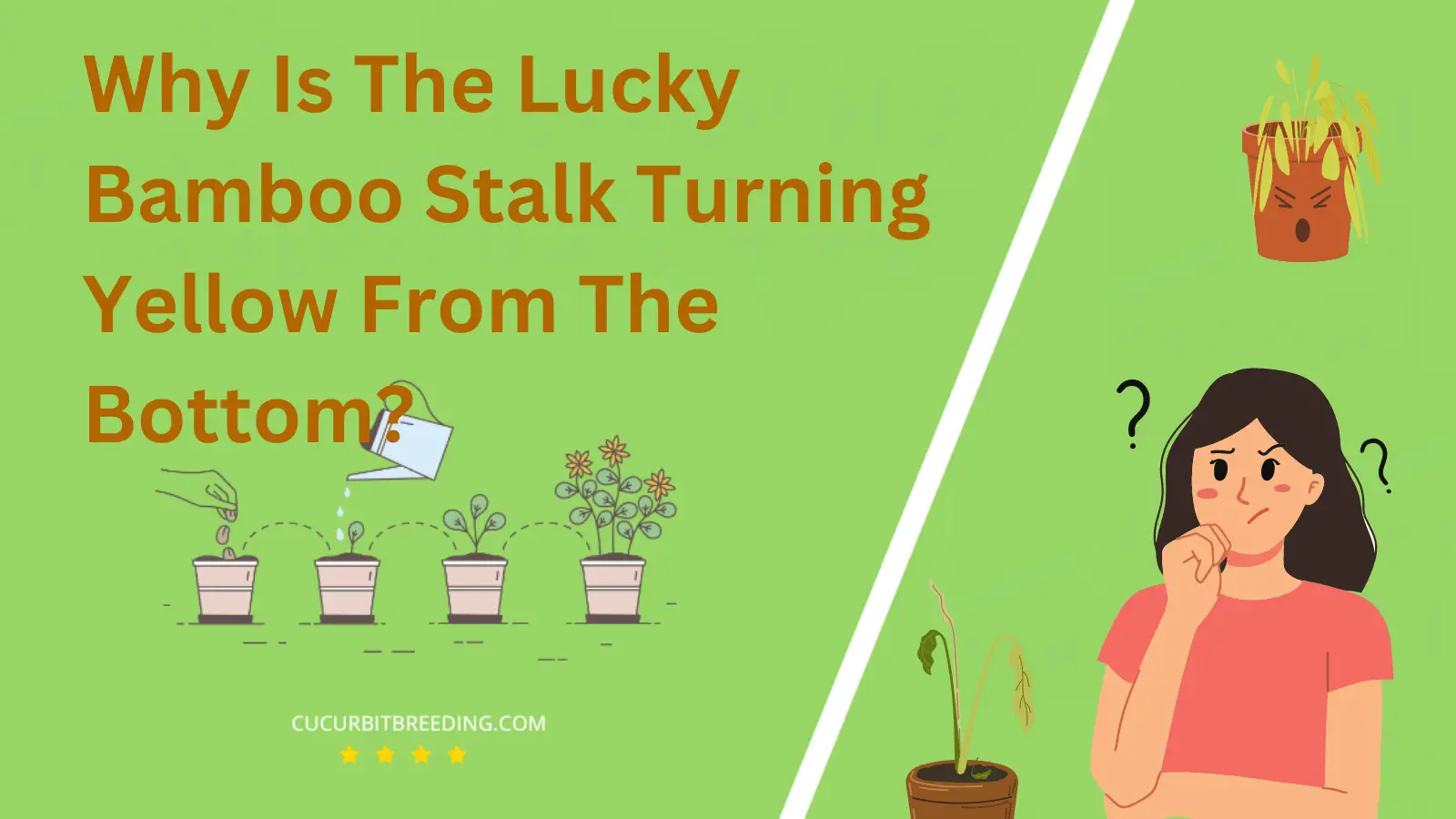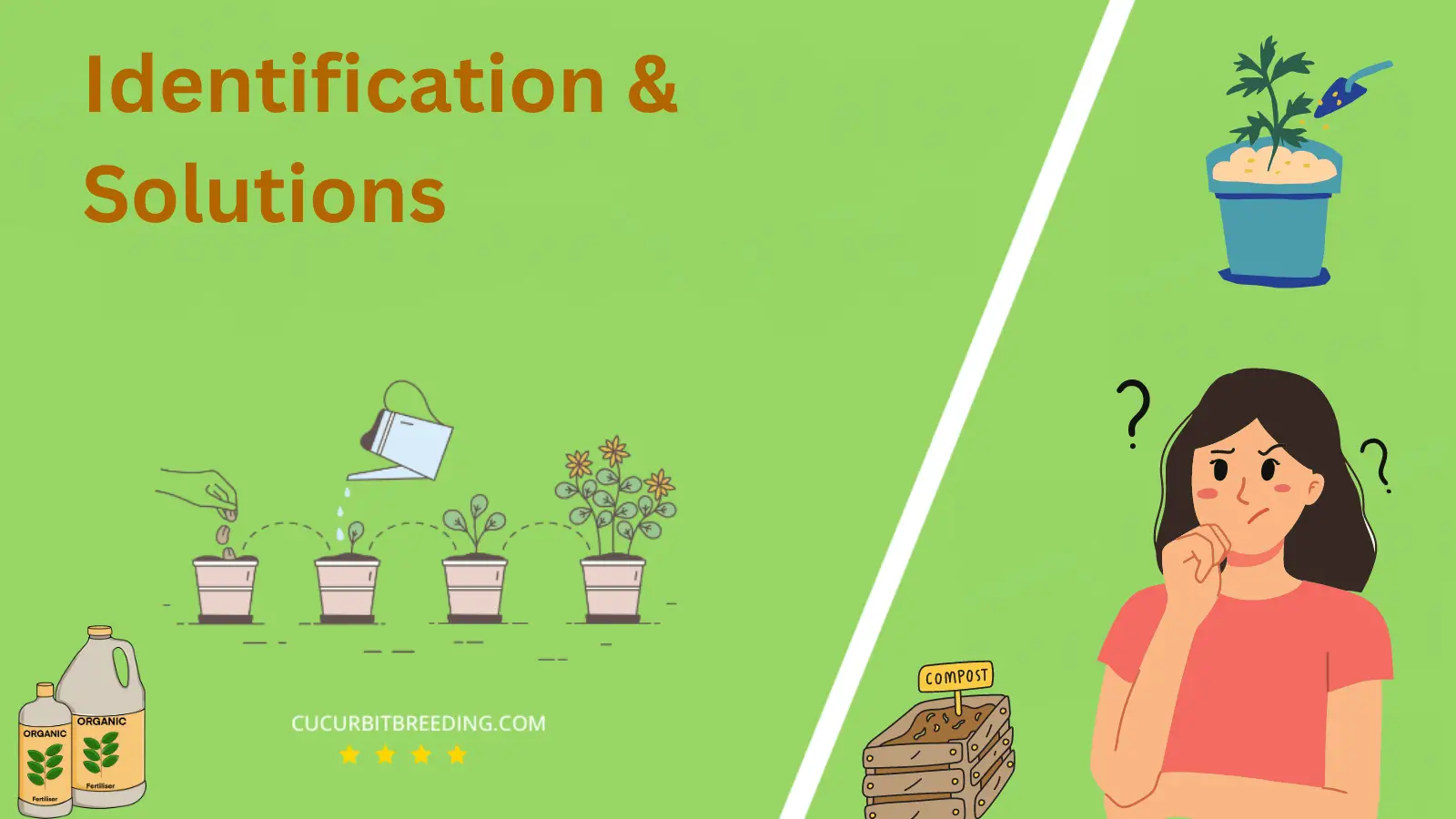
There’s no denying the charm of Lucky Bamboo, a beloved houseplant known for its resilience and elegance. However, you might have noticed an alarming change: the Lucky Bamboo stalk turning yellow from the bottom.
This symptom typically signifies some form of distress. But what could possibly go wrong with such a hearty plant? Its hardiness notwithstanding, the Lucky Bamboo might be sending out a silent outcry for help…
Why Is The Lucky Bamboo Stalk Turning Yellow From The Bottom?
1. Overwatering
| Description | causes excess water in roots, leading to lack of oxygen and nutrient uptake, causing yellowing. |
|---|---|
| Solution | Reduce watering frequency to prevent root rot and promote healthy growth. |
Overwatering is one of the main causes for the lucky bamboo stalk turning yellow from the bottom. The reason for this is that overwatering saturates the roots of the plant, preventing them from receiving the necessary amount of oxygen. This can lead to root rot, which in turns leads to the yellowing of the stalk.
The first step in rescuing an overwatered lucky bamboo is to remove it from the water immediately. Clean the roots under running water to remove any decay. Trim off any yellow parts of the stalk or leaves. After doing so, place it back in a container with just enough water to cover the roots.
Remember to change the water in the container every 7 to 10 days to prevent bacteria or fungus growth. Monitoring the plant’s water intake can greatly reduce the risk of overwatering in the future. Pay close attention to the color and overall health of your plant, adjusting water levels as necessary.
Lastly, although the lucky bamboo can grow in water, it prefers well-draining soil. If your plant continues to struggle, consider transferring it to a pot with fast-draining soil. This can help prevent overwatering and may help your plant thrive.
2. Underwatering
| Description | causes dehydration, reducing chlorophyll production and leading to yellowing of the leaf. |
|---|---|
| Solution | Water the plant more frequently to prevent dehydration and maintain healthy green stalks. |
Underwatering is a common cause for the yellowing of lucky bamboo stalks. This occurs because inadequate water availability can cause the plant to become stressed and begin to wilt. Lucky bamboo needs consistent moisture to stay healthy; when it hasn’t received enough water, it lacks necessary nutrients causing it to turn yellow from the bottom.
A simple solution to rectify the yellowing due to underwatering is to ensure that the lucky bamboo is given enough water. Place bamboo in a container that allows it to hold water, without having it sit directly in it, to avoid rotting. Change the water every one to two weeks. It’s also essential to use filtered or distilled water since the chlorine in tap water can damage the plant. In addition, ensure that your bamboo is getting indirect light, as too much sunlight can also lead to yellowing.
Consistently monitoring your plant for signs of stress can prevent more extreme yellowing in the future. Regular and attentive care is the key to maintaining a healthy lucky bamboo plant. If underwatering was severe and caused significant damage, consider propagating the healthy portions of the plant to start fresh.
3. Lack of sunlight
| Description | The lack of sunlight causes the lucky bamboo stalk to turn yellow from the bottom. |
|---|---|
| Solution | Increase exposure to sunlight |
Improper sunlight exposure can certainly lead to your lucky bamboo stalk turning yellow. It often happens because bamboo plants, especially those grown indoors, require indirect rather than direct sunlight. **Lack of sufficient light may cause chlorophyll breakdown**, resulting in a yellow color.
The placement of your bamboo plant can greatly affect its light exposure. If the plant is located in a poorly lit area, it doesn’t get the necessary amount and type of light. This affects its photosynthesis process, thus making the plant look yellow.
To counter this problem, ensure that your **bamboo he gets two to three hours of indirect sunlight every day** which is optimal for its growth and health. Never place your plant in direct sunlight as it can cause leaf burn. If it’s not possible to provide natural indirect sunlight, consider using fluorescent lights as a substitute.
Monitor the plant’s color over the next few weeks to make sure it starts exhibiting a healthier, greener color. In case you observe no changes, examine for other potential issues such as overwatering, underwatering, or nutrient deficiencies.
Keep in mind that **ongoing care and proper conditions** are crucial in maintaining a healthy lucky bamboo.
4. Nutrient deficiency
| Description | The lack of sunlight causes the lucky bamboo stalk to turn yellow from the bottom. |
|---|---|
| Solution | Increase exposure to sunlight |
Lucky bamboo turning yellow from the bottom is commonly due to a nutrient deficiency. To understand this occurrence, the plant’s nutrient needs must be taken into account. Lucky bamboo, like any other plant, needs nutrients to grow properly, fortify its immunity, and maintain overall health.
When these necessary nutrients are insufficient or lacking in the plant’s water or soil, the plant would be unable to perform its basic cellular functions. This ultimately leads to the manifestation of health defects, including yellowing from the bottom. This problem is more prominent in this indoor plant because it often grows in water and may lack access to nutrients typically found in soil.
Addressing this condition involves correcting nutrient levels in the lucky bamboo’s environment. Providing a well-rounded water-soluble fertilizer that’s compatible with lucky bamboo can be an excellent first step. Add this to the water according to the package’s instructions, focusing on nitrogen, phosphorus, potassium, and trace elements. Remember to change the water and clear up any debris regularly to prevent nutrient buildup and further plant stress.

5. Root rot
| Description | Increase exposure to sunlight |
|---|---|
| Solution | Improve drainage, reduce watering frequency, and trim affected roots to solve the yellowing of lucky bamboo. |
Root rot is a major cause of a lucky bamboo turning yellow from the bottom. This condition typically occurs when the plant is excessively watered or left in waterlogged soil, creating an ideal environment for fungus and bacteria to thrive which attacks the roots. As a result, the roots become soft, brown and rot, profoundly impacting the plant’s ability to absorb water and essential nutrients. This manifests itself in the yellowing of the bamboo stalk from the bottom.
To address the issue of root rot, you must take immediate action. If the rot is confined to a specific area, you may be able to save the plant by removing the rotten parts using a sterilized cutting tool. Afterward, allow the cut to dry out before replanting the bamboo in fresh, well-draining soil or clean water. Also, consider reducing the frequency of watering and only do so when the soil is dry to touch to prevent a recurrence. Furthermore, using clean pots and tools can effectively prevent the spread of bacteria and fungus.
6. Pests or diseases
| Description | Nutrient deficiency or root rot can cause the lucky bamboo stalk to turn yellow from the bottom. |
|---|---|
| Solution | Inspect the roots for rot, remove affected parts, and ensure proper watering and light conditions. |
Yellowing in plants, including lucky bamboo, could be due to pest infestation or diseases. Pests, like funguses, can cause damage to the plants, while diseases can disrupt their normal growth process. This can lead to symptoms such as yellowing, mostly starting from the bottom of the stalks.
To tackle this problem, start by identifying the specific pest or disease inflicting your plant. This can be done through careful examination or consultation from a local nursery or extension service. Once identified, apply a suitable method of control.
For pests, you can use natural predators, trap them, prune infested parts, or in severe cases, apply an environmentally friendly pesticide. For diseases, embrace practices that prevent their spread such as watering accurately to prevent waterlogging, maintaining hygiene, and pruning diseased parts. Sometimes, using a specific fungicide or bactericide might be necessary. Remember that prevention is always better than cure, hence the importance of regular plant check-ups and care.
7. Aging or natural growth process
| Description | The specific reason that makes the leaf turn yellow is aging or natural growth process. |
|---|---|
| Solution | Increase antioxidant intake and engage in regular exercise to slow down the aging process. |
Lucky Bamboo stalks turning yellow from the bottom can often be attributed to overwatering. Excessive water can lead to a condition called root rot, decay of roots due to lack of oxygen. This further restricts the plant’s ability to absorb water and nutrients, causing the lower parts of the plant to turn yellow.
To treat this issue, first drain the plant completely, then allow it to sit out of water for an hour. When re-watering, use only filtered or distilled water, as tap water often contains chlorine, which can harm the plant. Adjust your watering schedule, making sure that the Lucky Bamboo is not sitting in too much water.
Additionally, consider repotting the plant into fresh potting mix to provide a healthier environment for the roots. Make sure the pot has sufficient drainage to prevent water from pooling at the bottom. Remember, proper watering is the key to maintaining the health of your Lucky Bamboo.